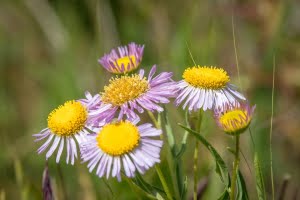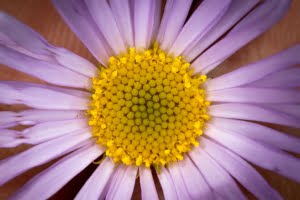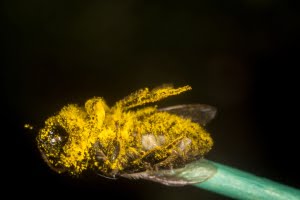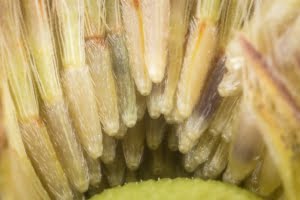
Bee Sticks in the Name of Conservation
By Matt Bahm, Steve Walters, David Cappaert, Lauren Merrill, and Annie Joliff
All photos by David Cappaert
June 2020
Willamette daisy (Erigeron decumbens) was once found throughout the Willamette Valley in northwestern Oregon, but is now restricted to only a few scattered remnant populations. Conservation efforts have increased the amount of Willamette daisy on the landscape, but there is still much to learn to continue to improve restoration efforts. One of the issues facing the species is low seed production in populations, likely caused from the decrease in size and isolation of remaining populations. IAE has partnered with the Army Corps of Engineers, Eugene District to determine if crossing different populations of Willamette daisy will increase the amount of viable seed produced.
We designed a greenhouse experiment to help answer this question that involves growing Willamette daisy from different populations and conducting cross-pollination of the populations. This will help us determine if using pollen from different populations results in more viable seed than simply having pollen from the same population. Often in these types of experiments, scientists will use small paintbrushes to move pollen. While this can work, it isn’t always effective at moving large amounts of pollen and since we wanted to be sure that we were moving as much pollen as possible we wanted to try another method. Since we knew that pollinators are obviously very good at collecting large amounts of pollen, we decided that we should go with nature’s well-designed solution: the honey bee (Apis mellifera).
Since we felt that training bees to go only to the correct flowers for our experimental crosses would take just a bit too long, we had to try a different route. Working with the OSU Honey Bee Lab, we were able to obtain frozen bees that we then made into “bee sticks” that we will use to transfer pollen from flower to flower.
While we are just starting to conduct the experimental crosses, we are hopeful that our “bee sticks” will increase our chances of success. Although some worker honey bees did have to be sacrificed for this work, we are hopeful that this project will help improve restoration efforts for Willamette daisy, and ultimately put more resources for pollinators out in the landscape of the Willamette Valley.
Tags:
Restoration
Research
Education
Contact
Main Office:
4950 SW Hout Street
Corvallis, OR 97333-9598
541-753-3099
info@appliedeco.org
Southwest Office:
1202 Parkway Dr. Suite B
Santa Fe, NM 87507
(505) 490-4910
swprogram@appliedeco.org
© 2025 Institute for Applied Ecology | Privacy Policy





